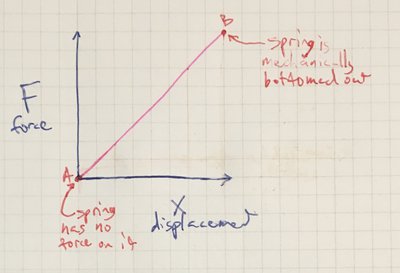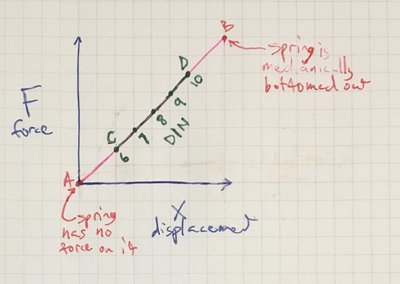A quick word on blocking ads

It looks like you are using an ad blocker. That's okay. Who doesn't? But without advertising revenue, we can't keep making this site awesome. Click the link below for instructions on disabling adblock.
Welcome to the Newschoolers forums! You may read the forums as a guest, however you must be a registered member to post. Register to become a member today!
eheathYou never want to run your dins on the minimum or maximum, buy them anyways and trade someone for 15s/sell them and buy 15s.
eheathYou never want to run your dins on the minimum or maximum, buy them anyways and trade someone for 15s/sell them and buy 15s.
404namenotfoundWhy is that? Not questioning your post or anything, been hearing this for a while but I just don't get it :/
BiffbarfThere's no reason besides conjecture and lore. Ideally, springs compress at a linear rate and as such 8 din on a pivot 18 should be 8 din on a pivot 15.
OP you should be fine unless they do not release test correctly at a shop, but there's no reason that they shouldn't be fine.
eheathIt's a fact that the bindings do not operate correctly at the min/max settings, anyone with any sort of skiing knowledge would tell you this is a fact, its not conjecture.
BiffbarfRead a book
eheathWhat are you talking about my dude? Why are you trying to feed some dude false info about bindings? idk why you think you can tell me im wrong but have nothing to back it up, you should never use your bindings at the min or max setting, bindings were not made made operate that way. Kindly fuck off with your bullshit.
BiffbarfBecause in theory, the only difference between a pivot 18 and pivot 15 are the springs, and the spring rate is a function of hook's law. Ideally, the spring rate when a 18 is set to 8 and a 15 is set to 8 is the exact same, the pivot 15's spring has just been compressed slightly more because it has a lower spring rate. My point is based on my limited engineering knowledge, your point is 'oh it just is'. I could be wrong but Idk why i would be.
eheathpivot/fks15 bindings have a range of 6-15, so no they're not the same dude.
eheathIt's a fact that the bindings do not operate correctly at the min/max settings, anyone with any sort of skiing knowledge would tell you this is a fact, its not conjecture.
eheathpivot/fks15 bindings have a range of 6-15, so no they're not the same dude.
No.QuarterI think you'd be surprised how few of the people who will tell you that it is bad to run bindings at min or max have any knowledge of how bindings are designed and manufactured or any mechanical engineering knowledge whatsoever. What basis do you have to say that setting an 8-18 binding set to 8 will cause it to not release at a value of 8 or will cause any damage to the bindings? Do you have insider information on the engineering and R&D that goes into a ski binding? What is the source of this statement that you claim to be fact.
DIN is DIN is DIN. I know these numbers may seem arbitrary, but they are standardized across the board to represent a consistent release force across all bindings, and ski binding mounts are often expensive because of the need to test the release value on a specialized machine. I am sure that you have been skiing long enough that release tests are not new information to you.
Setting a binding to the lowest or highest setting will not cause damage to the bindings, any ski binding will be built to withstand at a bare minimum the range of spring forces that it will experience under normal boot holding as well as when it is releasing. The most common ski binding failures are not due to the spring mechanism, they are failures of the mounting screws and the length adjustment mechanism, or a failure due to an impact or structural material wear and fatigue
The only drawback to running bindings at the min or max is that you do not have the freedom to adjust your settings according to how one's skill or release safety requirements change. So if you are normally at the minimum and for example you get injured and want to release at a lower value to protect your knees for example you don't have the freedom to do that. Or if you are at the max of the range and you get heavier, taller, or start skiing more aggressively and releasing a lot you don't have the freedom to increase the release value. This is the only reason to want to be in the middle of the adjustment range, it has nothing to do with the reliability of the stated DIN values.
No.QuarterThe 15 and 18 are the exact same binding with different springs and indicator windows. Otherwise they share the same construction. There is absolutely no reason for Look to manufacture the 15 with any different material properties and structural strength than the 18, other than the spring of course to provide a different range of release values.
eheathMaybe things are different for other bindings, I've only uses fks for 20 years or so (i actually have some old pivot 14 dildo bindings i still have on pow skis but doesnt matter) and everyone I have every talked to has said to never run bindings at min or max, maybe this is just an fks thing but its relevant because of the thread topic.
What I've always been told is the spring tension is either too low or too high when at the min/max setting so your bindings will either not operate correctly and/or you will damage your springs.
I think its still a bad idea to recommend someone buy pivot 18s and run them at 8, I've honestly never heard anyone dispute min/max din until today...
eheathI'm not sure what this has to do with the bindings having different DIN ranges, they're obviously the same construction, unless its the plastic toe..
No.QuarterThat is the same thing Biffbarf was getting at, I was just poking at that you seemed to have missed that in his comment.
Also I really wish multi-quoting worked on my browser
Phatboy64FWIW a few years back when I was first looking at that CAST setup and pivot18s were the only option I called Look and had a good conversation with one of their techs about this topic. His response was the binding will operate and release as designed across the full range of specified settings. That said I personally don’t like running bindings at the lowest or highest settings. But that is just me....
eheathI'm not sure what this has to do with the bindings having different DIN ranges, they're obviously the same construction, unless its the plastic toe..
No.QuarterI always try to dispel this misconception when I can, there have definitely been a few discussion about it in GT. And it is definitely a pretty common misconception, but it is pretty unfounded and often touted by shop techs and salespeople who don't have any engineering or manufacturing background. I'm not faulting you for holding onto a misconception that plenty of skiers have.
I will agree to not recommend being on the min or max of an adjustment range, but not because it will damage the binding. Just because I think it's important to have some room for adjustment to provide safe release from the bindings as one's skill level, fitness, technique, weight, etc changes.
Ski bindings are a piece of safety equipment after all, and the DIN standard is implemented in order to provide consistency for the user, and a certain degree of legal protection for the manufacturer. DIN standards are not just used for ski bindings either, they are an international standardization body that provides common standardization requirements for so many different aspects of science, engineering, and beyond. From their website:
"DIN Standards are the results of work at national, European and/or international level. Anyone can submit a proposal for a new standard. Once accepted, the standards project is carried out according to set rules of procedure by the relevant DIN Standards Committee, the relevant Technical Committee of the European standards organization CEN (CENELEC for electrotechnical standards) or the relevant committee at the international standards organization ISO (IEC for electrotechnical projects).
All stakeholders can participate in this work, including manufacturers, consumers, businesses, research institutes, public authorities and testing bodies. They send experts to represent their interests within DIN's working bodies, which are overseen by some 70 standards committees, each of which is responsible for a specific subject area. For work at European and international level, the DIN standards committees send experts to represent German interests within CEN and ISO, respectively. DIN staff members coordinate the standardization process and are responsible for overall project management, ensuring the uniformity and consistency of the German standards collection.
Standards are developed with full consensus, that is, they are developed by experts with the aim of arriving at a common standpoint, taking the state of the art into consideration.
DIN Standards are reviewed at least every five years. If a standard no longer reflects the current state of technology, it is either revised or withdrawn."
Now if only ski boot manufacturers would put their heads together for development of a DIN standard for boot stiffness...
DolansLebensraumThe thing about springs is they dont behave ideally in practice. The actual force vs binding displacement graph might look different between a strong spring binding set at din 8 and a weak spring binding set at din 8, even if say the min or avg force required for boot release is the same on both bindings.
for example, imagine putting a complete vagina of a spring into a binding. In order to get a din of 8, you would have to crank the din screw down until the spring was compressed so far it stopped behaving ideally or even worse, bottomed the fuck out midway through boot release and trapped the boot and ripped your leg off.
this is based on my understanding of bindings mechanics taken to the logical extreme.
but i think there might be a shade of truth to evans idea.
i dont think it makes enough difference that you should avoid setting a binding on min or max din, but the takeaway is that springs dont behave ideally, especially at the extremes.
im pretty sure that ski shop employees tell customers the thing evan said is bc they want to sell the customers the 500$ bindings even though the 150$ bindings are plenty strong.


shred14Basically I’m getting a mix of reviews from this topic. I think I’m going to sell the Pivot 18s and purchase Pivot 15s since I will have a lot more adjustability and regardless of opinions (or facts) I will be in the “safe” zone. Thanks for the input.
eheathpivot/fks15 bindings have a range of 6-15, so no they're not the same dude.